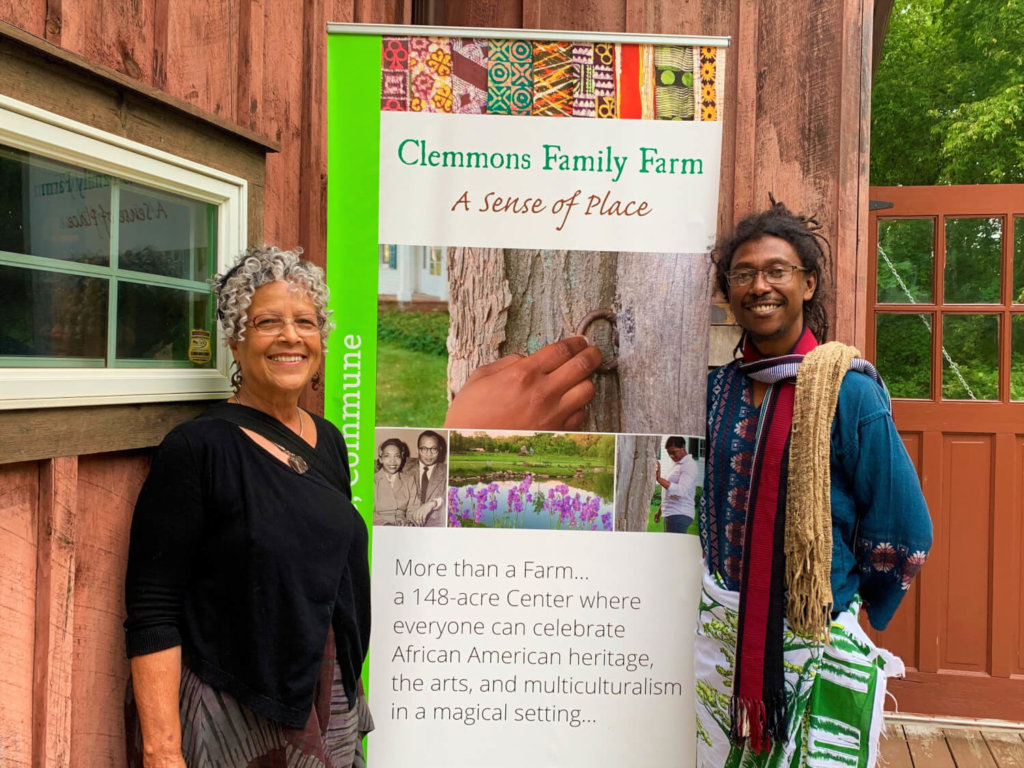A language beyond culture

Having connected at the VT African Diaspora Artists’ Summit at the Clemmons Farm earlier this summer, Kaylynn Sullivan TwoTrees of Hinesburg and Mikahely Rakuto Rozafy (Mika) of Burlington have embarked on a collaboration that joins her visual artistry with his musical scoring to explore vocables as the language of our shared consciousness. At their open studio at the Clemmons Farm on September 8, I had the pleasure of talking with these two artists, viewing and listening to their work as it unfolds.
TwoTrees’ idea of a secret language that inspires her painting evolved from the similarity between vocables—words composed of various sounds or letters without regard to meaning—in many indigenous traditions. Vocables communicate, she suggests, at the boundaries of thought and language where deep sensing occurs. Growing up in a family where people remember their connection to the natural world through vocables imbedded in song may have primed TwoTrees to reach out for and catch this idea when it first flickered into awareness. Discovering in 2016 the story of a village in southern India where chants handed down orally for thousands of years bore no relation to any known language helped solidify her idea and prompted her to create a series of graphics, visual vocables, which became a larger body of 40+ paintings.
TwoTrees’ paintings are the imagery for the libretto/score Mika is creating for his valiha, the national instrument of Madagascar, Mika’s home until just two years ago when he came to Vermont so his wife could attend graduate school. Asked how he composes his music, Mika says he watches the paintings, now on video, and the sound just comes.
Could we hear a bit? Mika brought out his valiha, a tube zither of local bamboo, placed his fingers on the strings, and played, producing a sound both beautiful and clear—a match for Kaylynn’s imagery.
Kaylynn TwoTrees’ paintings are the inspiration for their final installation, performance and video, now in the works, that will also include vocals by Heidi Wilson and Gideon Crevoshay. These creations, she says, are meant to evoke a deep remembering in the viewer that invites us to consider the hard boundaries of the culture-based languages that divide us. To which Mika adds that “paintings and music talk together,” offering a way back to our cosmic connection.
I wondered, as I am sure you must, when we might anticipate the release of their works. They are in discussion with Burlington City Arts about an exhibition in 2021. We’ll be waiting.

